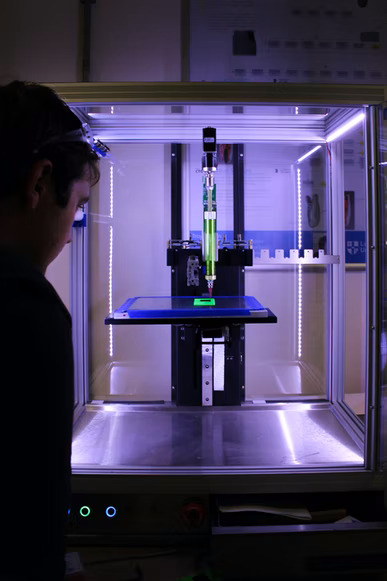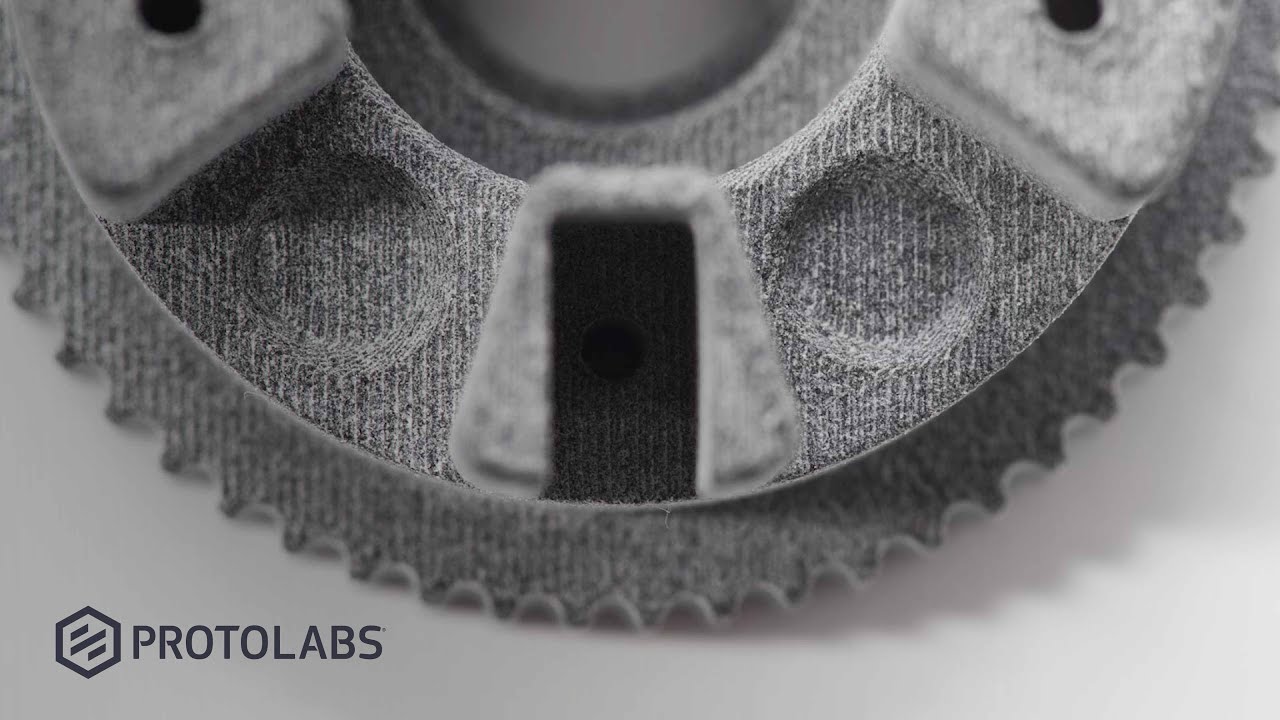3D Printing - Overview And Multipurpose Applications
It would be good for the economy if 3D printing applications were increased in the manufacturing, medical, industrial, social, and cultural sectors.
Author:Suleman ShahReviewer:Han JuDec 21, 202250 Shares1.3K Views

3D printing is creating a three-dimensional item from a digital 3D model. The term "3D printing" can refer to a variety of techniques in which material is deposited, joined, or solidified under computer control to create a three-dimensional object, with the material being added together (such as plastics, liquids, or powder grains being fused), typically layer by layer. It would be good for the economy if 3D printing applicationswere increased in the manufacturing, medical, industrial, social, and cultural sectors.
In the 1980s, 3D printing applications were thought to be only suited for the fabrication of functional or aesthetic prototypes, and a more fitting phrase for them was "fast prototyping." As of 2019, the precision, repeatability, and material range of 3D printing have improved, and some 3D printing techniques are deemed feasible as industrial-production technologies. The terms"additive manufacturing" and "3D printing" may be used interchangeably.
One of the primary benefits of 3D printing is that it generates the capacity to generate highly complicated forms or geometries that would otherwise be impossible to make by hand, such as hollow pieces or items with internal truss systems to minimize weight. As of 2020, the most common 3D printing method is fused deposition modelling (FDM), which uses a long filament of a thermoplastic material.

3D Printing Basics - NOT as easy as you think!
What Is 3D Printing And How Does It Work?
3D printing, also known as additive manufacturing, is the method of creating three-dimensional solid items from a digital file. Additive methods are used to create 3D printed objects. An item is manufactured using an additive technique by laying down consecutive layers of material until the product is complete. Each of these layers may be viewed as a thinly sliced cross-section of the item. It is 'additive' in the sense that it does not require a block of material or a mould to produce physical things; instead, it simply stacks and fuses layers of material. It is often rapid, with minimal fixed setup costs, and can produce more complicated geometries than 'conventional' technologies, with an ever-expanding array of materials.
It is widely utilized in the engineering sector, notably for prototyping and producing lightweight geometries. 3D printing is the inverse of subtractive manufacturing, which involves cutting or hollowing out a piece of metal or plastic with a machine such as a milling machine. 3D printing allows you to create complicated shapes with less material than traditional production processes.

3D Printing - What is it and How Does it Work? (in 75 sec)
3D Printing Types
3D printing can be classified into the following types:
- Vat Polymerization:light cures liquid photopolymer
- Vat Polymerization:light cures liquid photopolymer
- Powder Bed Fusion:A high-energy supply fuses powder particles.
- Material jetting:droplets of liquid photosensitive fusing agent are dropped onto a powder bed and treated by light.
- Binder Jetting:droplets of a liquid binding agent is placed over a bed of granules materials before being sintered together.
- Direct Energy Deposition:simultaneous deposition and fusion of molten metal
- Sheet Lamination:individual sheets of material are cut to form and bonded together.
3D Printing Applications
For prototypes, 3D printing is quite handy. Speed is crucial in prototyping, and the ability to transition from CAD to print with near-zero setup expenses means 3D printers can make parts quickly while still having excellent unit economics for single-part and small-run runs. Speed and affordability are also essential considerations for printing production components, but design flexibility and ease of modification are the most widely used attributes. Topology optimized structures with a high strength-to-weight ratio are utilized for high-performance parts in aerospace and automotive, and components that previously needed assembly may be combined into a single piece. Customization is crucial in healthcare; most hearing aids manufactured in the United States are nearly entirely built using 3D printing. Low-run injection moulds may be 3D printed from stiff, heat-resistant polymers rather than machined from metal in production, making them significantly cheaper and faster to make.
- Medical:In the medical field, 3D printing has various uses, and each year, physicians and scientists come up with new and inventive methods to employ this rapidly evolving technology. Because of the speed and adaptability of 3D printing are ideal for creating personalized prostheses and implants and patient-specific reproductions of bones, organs, and blood arteries. It is also used to 3D print surgical instruments, anatomical models, tailored medical equipment, and other life-saving advancements.
- Automotive Industry:Automobile manufacturers utilize 3D printing in the automobile sector to evaluate the shape and fit, experiment with aesthetic treatments, and ensure that all parts perform and function as intended. It also offers a versatile solution for fast turnover of jigs, fixtures, and grips, the creation of bellows, the engineering of intricate ducting, and the rapid manufacture of complex, lightweight mounting brackets.
- Jewelry:There are several reasons why so many jewelry designers employ 3D printing. The technology enables jewelers to create highly intricate, customizable patterns while avoiding restrictions of formerly popular jewelry-making processes such as CNC machining, handcrafting, and lost-wax casting. Precious metals may now be 3D printed in a range of patterns and designs quickly and cost-effectively.
- Education:3D printing has long been used in the classroom by educators and students. 3D printing allows students to quickly and affordably express their ideas.
3D Printing In Future
According to Smithers' latest research, The Future of Global 3D Printing through 2027, this market is poised for rapid expansion over the next decade. It will increase from $5.8 billion in 2016 to $55.8 billion by 2027, representing a 23.0% annual growth rate.
As 3D printing becomes more mainstream, innovators and creatives will find it more accessible and simpler to convert their ideas into reality. Inventors are already finding it much easier to create prototypes thanks to 3D printing. In the future, 3D printing might also be used in the manufacturing process. 3D printing enables the simple construction of complicated forms, many of which cannot be generated by any other type of manufacture.
Because of the addictive nature of the technology, geometric intricacy does not come at a higher cost. New materials and material composites, lower prices, and mature post-processing choices will make integrating 3D printing into production cycles more feasible. As the technology advances, it will become a more competitive alternative to injection moulding for low-volume plastic items.

Suleman Shah
Author
Suleman Shah is a researcher and freelance writer. As a researcher, he has worked with MNS University of Agriculture, Multan (Pakistan) and Texas A & M University (USA). He regularly writes science articles and blogs for science news website immersse.com and open access publishers OA Publishing London and Scientific Times. He loves to keep himself updated on scientific developments and convert these developments into everyday language to update the readers about the developments in the scientific era. His primary research focus is Plant sciences, and he contributed to this field by publishing his research in scientific journals and presenting his work at many Conferences.
Shah graduated from the University of Agriculture Faisalabad (Pakistan) and started his professional carrier with Jaffer Agro Services and later with the Agriculture Department of the Government of Pakistan. His research interest compelled and attracted him to proceed with his carrier in Plant sciences research. So, he started his Ph.D. in Soil Science at MNS University of Agriculture Multan (Pakistan). Later, he started working as a visiting scholar with Texas A&M University (USA).
Shah’s experience with big Open Excess publishers like Springers, Frontiers, MDPI, etc., testified to his belief in Open Access as a barrier-removing mechanism between researchers and the readers of their research. Shah believes that Open Access is revolutionizing the publication process and benefitting research in all fields.

Han Ju
Reviewer
Hello! I'm Han Ju, the heart behind World Wide Journals. My life is a unique tapestry woven from the threads of news, spirituality, and science, enriched by melodies from my guitar. Raised amidst tales of the ancient and the arcane, I developed a keen eye for the stories that truly matter. Through my work, I seek to bridge the seen with the unseen, marrying the rigor of science with the depth of spirituality.
Each article at World Wide Journals is a piece of this ongoing quest, blending analysis with personal reflection. Whether exploring quantum frontiers or strumming chords under the stars, my aim is to inspire and provoke thought, inviting you into a world where every discovery is a note in the grand symphony of existence.
Welcome aboard this journey of insight and exploration, where curiosity leads and music guides.
Latest Articles
Popular Articles